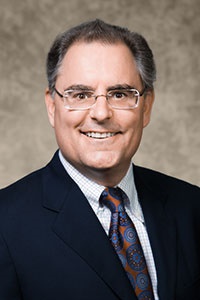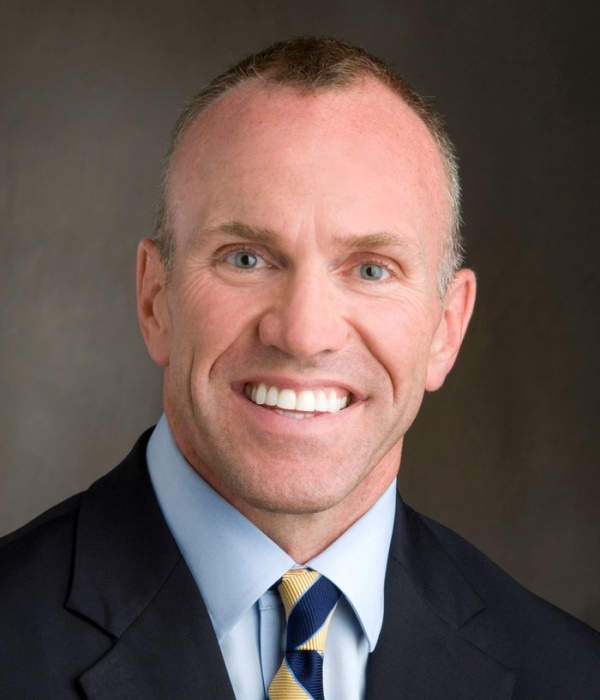Orthopedic surgeons consider several factors before performing outpatient total hip replacement, including which approach to use.
Thomas Ellis, MD, of Columbus, Ohio-based Orthopedic One; Coleman Fowble, MD, of Columbia, S.C.-based Midlands Orthopaedics & Neurosurgery; and John Masonis, MD, of Charlotte, N.C.-based of OrthoCarolina, discuss why they adopted the direct anterior approach for THA and the benefits they've seen.
Question: Do you utilize the posterior-lateral approach or direct anterior approach when performing total hip replacement and why?
Dr. Thomas Ellis: I now use the anterior approach for almost all my hip replacements. I started learning the anterior approach in 2008. I learned [the anterior approach] because I felt the dislocation was lower with the anterior approach and that it was easier for me to measure leg length. It also had less damage to the gluteal muscles.
Dr. Coleman Fowble: [I perform] both approaches; I do my total hips anteriorly, and if I do hip resurfacing, I do posterior approach.
Dr. John Masonis: Direct anterior has been my surgical approach for all primary THA cases since 2004.
Q: Research yields comparable long-term clinical results for the two approaches, but some studies reveal patients achieve faster recovery with the direct anterior approach — do you agree with this? Would you say more surgeons are adopting the direct anterior technique?
JM: Correct. The functional recovery between the posterior and direct anterior approaches seems to equalize between two and six months post surgery. The early recovery period favors the direct anterior approach due to a faster return to normal walking and independence from assistive devices, such as a cane or crutch. The approaches each have their advantages, with the posterior approach having relatively good early hip flexion strength and the direct anterior approach demonstrating good early hip extension strength, which makes walking recovery faster.
CF: Twenty percent of the total hip surgeries in the U.S. use anterior approach; if you go to Paris, France, it's 99 percent anterior. It's coming from Europe and their teaching models are probably better — more direct surgeon-to-surgeon teaching. They seem to have a better model.
TE: I think the surgeons who are currently practicing and busy are comfortable with the posterior-lateral approach, so it's hard for them to change. And when they do want to change, it can be a difficult learning curve to master the anterior approach. It takes time and commitment, and the former is in short supply for most of us. Orthopedic residents/fellows are still primarily exposed to the posterior-lateral approach, but as more are exposed to the anterior approach I think we will see many more surgeons adopt the anterior approach.
Q: What are major benefits when considering the direct anterior approach for THA? How does this approach align with MIS principles?
JM: In my opinion, the greatest benefit of the anterior approach is not the speed of recovery, [although] patients focus on the rapid recovery and I think for them this is an important element. [But] for me as a surgeon, the greater benefits are threefold:
- There are no dislocation precautions after surgery, which allow patients to return to normal activity without dislocation precautions.
- Component placement accuracy is greatly improved via the direct anterior approach compared to THA completed via the posterior approach. Recent research data from our center reviewing over 1,000 cases performed by 10 hip/knee arthroplasty specialists demonstrates much higher acetabular position accuracy using the anterior approach. Using the anterior approach with intra-operative fluoroscopy increased the accuracy even further.
- Using the inter-nervous/intermuscular surgical plane for the direct anterior approach allows for complete muscle recovery in both the primary and revision setting. This has shown to be important in revision cases to help prevent scarring and muscular dysfunction that can be seen in other surgical approaches.
Q: In terms of disadvantages, how steep is the learning curve to learn the direct anterior approach? What is the best way for a surgeon to tackle learning this procedure?
TE: The learning curve can be difficult. It takes commitment and time to become proficient. I think [surgeons] should to go to a course (or multiple courses) and work on cadavers to get familiar with the approach. I think you should go watch a surgeon do the surgery. And then, ideally, the first one you do, you have someone there to proctor you, and help you for the first couple times you're doing it. Medacta’s AMIS Education Platform has provided me and others with the ability to do this. Once you do a few, then I think you should go back and do another surgeon visit and lab and then go back and continue doing the surgery; each time you visit a surgeon, you pick up nuances that make the surgery better.
Q: What are the clinical benefits of same-day surgery in comparison to traditional inpatient THA? Does your preferred approach present any particular advantages or challenges, specific to the ambulatory setting?
CF: The biggest advantage is safety. If you're a healthy patient, you certainly don't need to be in the hospital for a day or three with people who have antibiotic-resistant infections or multiple patients raising risk of medication errors. In the outpatient setting, you can create the exact same care model without the hospital stay. We are giving these patients the exact same pain medication, anticoagulant and therapy that they would get in the hospital. We send a home health nurse out to the patient's home the evening of surgery, followed by both a nurse and therapist to their house the next morning. It's all part of the bundle.
TE: I agree with this and I think it bears repeating — sick people are in hospitals, so I prefer my patients limit their stay. So, if they are medically able and safe to go home, my desire is to get them out of the hospital setting as soon as possible.
Q: Would you say patients are increasingly seeking surgeons who utilize the anterior approach for THA?
JM: There has been a steady increase in patient demand for THA via the direct anterior approach. Some patients have been influenced by individual physician advertisement, which may or may not contain accurate clinical data. More commonly, many individuals learn about the anterior approach for THA from other patients. This "word of mouth" transfer of information is probably the most important testimony to the technique.
TE: Yes, in my practice I have a lot of patients who are coming to see me because I perform the anterior approach. They've already seen surgeons who don't do it and they have elected to come to me. They're doing their research — this is a patient-driven procedure at this point.
CF: I agree, and nobody comes in and asks for the posterior approach.
Q: How has the industry evolved to make way for this THA approach, benefitting the patient, surgeon and hospital?
TE: I think that educational programs are improving significantly; they're developing approach-specific instruments that are especially designed for the anterior hip replacements. The companies are providing tables to manipulate the leg that makes it easier to do the surgery with only one assistant. They are also facilitating discussion of postoperative protocols that facilitate faster home discharge.
CF: I did almost 800 anterior hips without a specialized table and it was physically brutal sometimes in more muscular patients. Now, I use the Medacta AMIS table; when you use the Medacta hip, the company supplies the table at no cost. This is especially important in the outpatient center, where an additional $100,000 capital expenditure can be quite daunting.
Q: Looking forward, do you believe procedures will continue to move to the outpatient setting?
CF: I think both the patients and insurance companies are going to demand it. Patients will because of the safety factor, and the insurance companies will because they see tens of thousands of dollars of savings per case compared to the hospital.
JM: As hospital costs and demand for quality both increase, the percentage of outpatient hip replacements will climb. Our challenge will be to create and perfect the most effective technique for total hip arthroplasty.
TE: I think the trend is going to continue; patients are driving it because they want to go home, and economically it makes sense because it's less expensive.
Pictured left to right: Dr. Thomas Ellis, Dr. Coleman Fowble and Dr. John Masonis





